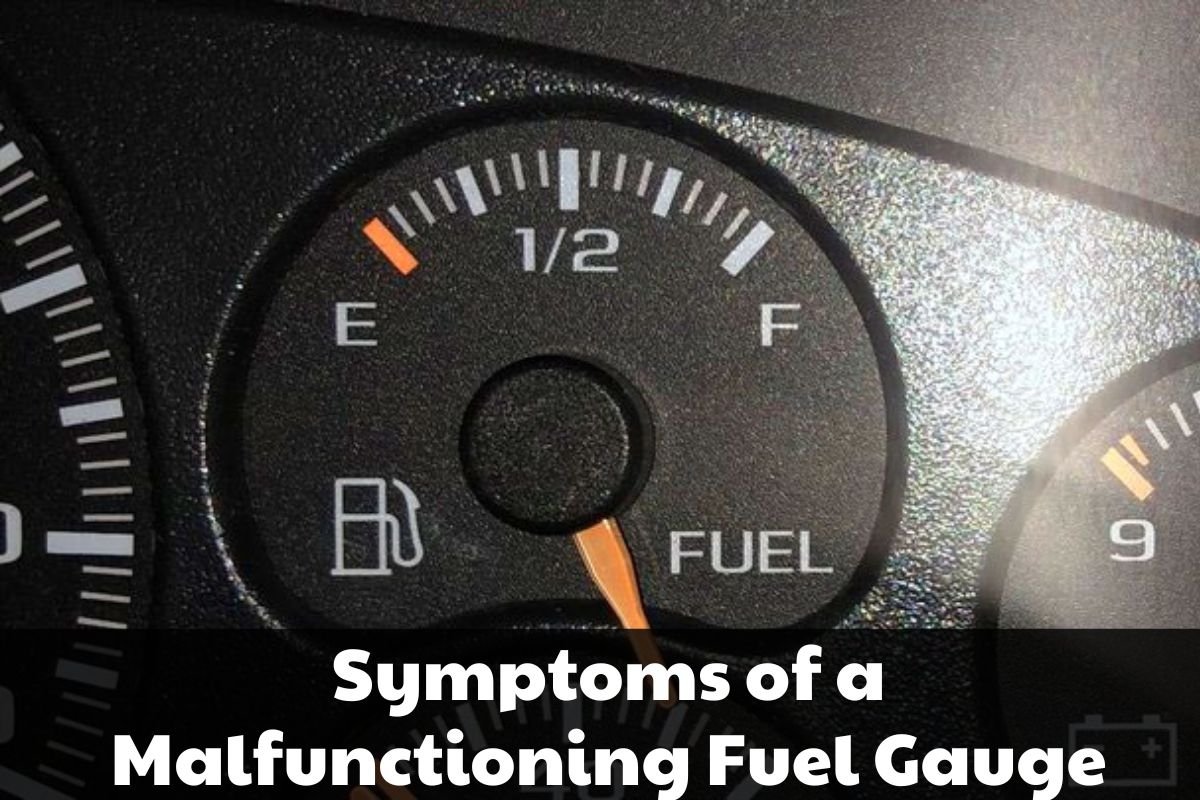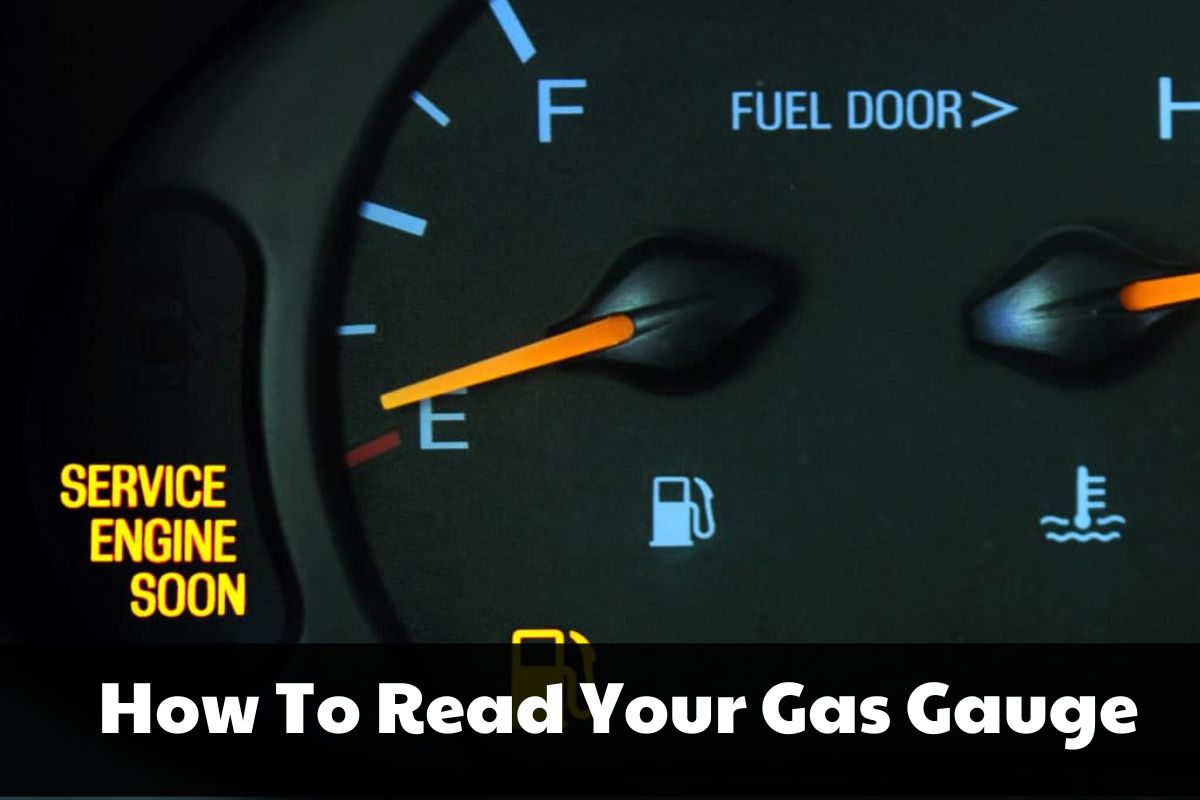Are you having trouble understanding the gas gauge in your car? Are you worried about running out of fuel at an unexpected time or place? Imagine feeling confident and in control when you hit the road, knowing exactly how much fuel is left in your tank.
Reading the gas gauge accurately can help provide that assurance. In this blog post, we’ll share tips on how to read the gas gauge with accuracy for a safer and more relaxing driving experience.
Are Gas Gauges Accurate?
According to the American Automobile Association, those gauges can’t always be trusted. It’s never a good feeling when you think you have enough gas to get to your destination, only to run out before arriving. To avoid the risk of getting stranded on the side of the road, it’s recommended to fill up when you hit the one-quarter of a tank mark.
How Does A Gas Gauge Work?
A fuel gauge is a device that measures the amount of gasoline in a vehicle’s fuel tank and displays it on the dashboard. It consists of two main components: the sensor system and the gauge.
The sensor system, also known as the sender, uses a variable resistor, float switch, and wiper to determine the amount of fuel in the tank. It converts this measurement into a fraction or percentage, indicating the tank’s fullness.
The gauge, or indicator, displays the fuel level on the dashboard. It moves a needle between the E marker (empty) and the F marker (full) based on the information received from the sender. This allows drivers to know when it’s time to refill their tank.
How To Read Your Gas Gauge?
Understanding your vehicle’s gas gauge is essential for monitoring your fuel levels and ensuring you don’t run out of gas unexpectedly. Here are some key points to help you read and interpret your gas gauge accurately:

Needle Position
Look at the position of the needle on the gauge. When the needle is closer to F (Full), it indicates that your gas tank is fuller. As the needle moves closer to E (Empty), it means your tank is becoming more empty.
Tick Marks
The gas gauge is marked by nine lines or “tick marks,” with each representing one-eighth of a tank. The larger lines indicate a full tank, an empty tank, and the one, two, and three-quarters full levels.
Capacity Representation
Each line on the gas gauge corresponds to 1/4 of the tank’s capacity. For instance, if you have a 20-gallon tank, each line would represent 5 gallons of gas.
Space Between Lines
The space between two lines represents one-eighth of the tank’s capacity. If the needle falls between two lines, it indicates that you have approximately one-eighth of the tank’s capacity left.
1/4 Line
The line closest to the bottom of the gauge represents 1/4 of the tank’s capacity. When the needle reaches this line, it suggests that you have only a quarter of the tank remaining. It serves as a warning that you should consider refueling soon.
Below 1/4 Line
If the needle drops below the 1/4 line, it means you have close to an eighth of the tank left, signifying that you should refill your tank promptly.
Low Fuel Warning
Modern vehicles often have a low fuel warning light that illuminates when the fuel level becomes critically low. This warning light provides an additional indication that you need to refuel soon.
Estimated Remaining Mileage
Some vehicles come equipped with technology that estimates the remaining mileage before you run out of gas. This feature can provide a more precise estimate of how much distance you can cover with the fuel left in your tank.
Example:
Let’s say you have a car with a 16-gallon tank. Here’s how you can read the gas gauge based on the information provided:
- When the needle is near F, it means your gas tank is nearly full, and you have approximately 16 gallons of gas.
- When the needle is between F and the first tick mark, it represents about 15 gallons of gas remaining.
- The 1/4 line on the gauge corresponds to 4 gallons of gas, indicating that you have a quarter of the tank remaining.
- If the needle falls below the 1/4 line but remains above the second tick mark, it suggests you have around 3 gallons of gas, indicating that you should refill your tank soon.
- When the needle reaches the E mark, it means you have approximately 1 gallon of gas left, indicating that you need to refuel immediately.
Related: How Many Miles in a Gallon
Symptoms of a Malfunctioning Fuel Gauge
A faulty fuel gauge can cause several issues when you’re driving, such as inaccurate readings and sudden drops in fuel level. Here are some common signs of a malfunctioning fuel gauge:

1. Gauge does not move from empty
The needle on the fuel gauge is stuck at E (empty) even after you refuel, indicating that the system is unable to register an increase in the tank’s capacity.
2. Erratic fluctuations
The needle fluctuates erratically between different positions, suggesting a problem with either the sender or gauge.
3. False full indication
Even though your tank isn’t completely filled, the indicator remains near F (full), which could be due to a fault in the sender or wiring harness connecting the sender to the gauge.
4. Needle drops suddenly
The fuel level appears normal on the gauge, but then rapidly drops when you turn a corner or accelerate, indicating an issue with either the sender unit or its wiring.
5. Inaccurate readings
When refueling, for example, the needle does not move as it should, suggesting that there may be a problem with either the sender or fuel tank itself.
6. The fuel light (low fuel indicator)
If the low fuel indicator light remains illuminated even after you have refilled your tank, it could be an indication that the fuel gauge is malfunctioning.
Related: How to test a fuel pump
What causes fuel gauge malfunction?
Fuel gauge malfunctions can be caused by a variety of issues, such as faulty wiring, loose connections, damaged fuel tank or sender unit, and more. To determine the source of the problem, it’s essential to conduct a thorough inspection of all components involved in the system.
This may require inspecting wiring harnesses for damage or corrosion, checking the fuel tank for dirt buildup or leaks, testing the sender unit output resistance with a multimeter, and so on.
In some cases, it may even be necessary to replace certain parts to restore proper functionality to the system. If you are not comfortable conducting these repairs yourself, it is best to consult an experienced mechanic who can diagnose and repair this issue quickly and effectively.
Tips for Preventing Fuel Gauge Malfunctions
- Regularly inspect all components of the fuel system
- Avoid overfilling your gas tank
- Periodically check fuel level manually
- Have any faults repaired immediately
- Follow your vehicle’s maintenance schedule
1. Regularly inspect all components of the fuel system
This includes checking wiring harnesses for damage or corrosion, testing the sender unit’s output resistance with a multimeter, and inspecting the fuel tank for dirt buildup or leaks.
2. Avoid overfilling your gas tank
If you fill up your tank past the designated F (full) line, it could cause an inaccurate reading on the gauge.
3. Periodically check fuel level manually
Use a dipstick to periodically check the level of gasoline in your vehicle, as this may help catch any issues that might be affecting your fuel gauge accuracy before they become more serious problems.
4. Have any faults repaired immediately
If you notice any signs of a malfunctioning fuel gauge, don’t ignore them. Have the problem inspected and repaired as soon as possible to avoid further damage or complications.
5. Follow your vehicle’s maintenance schedule
Regularly scheduled maintenance can help ensure that all components of your car are in good working order, which may prevent potential problems with your fuel gauge system.
How much would it cost to fix a gas gauge?
You can expect to pay around $200 to $300 for the labor if you bring in the replacement gauge yourself. However, if the shop has to order the gauge for you, this can increase the total cost by up to $1,000.
FAQs about How to Read the Gas Gauge
How do you read a gas gauge?
The space between two lines on a gas gauge indicates an eighth of a tank. If the needle is between 1/2 and 3/4, it means you have 5/8 of gasoline. The line nearest to the bottom means 1/4 tank, and below that is close to 1/8, which means you should fill up now.
What should you do if your fuel gauge is stuck on empty?
If the needle remains stuck at E (empty) after refueling, this could indicate a problem with either the sender unit or wiring harness connecting it to the gauge. A thorough inspection of these components is necessary to determine the source of the issue and make any repairs accordingly.
Is there a way to tell when my tank is full without relying on the gas gauge?
Yes, you can use a dipstick to manually check the level of gasoline in your vehicle periodically. This may help catch any issues that might be affecting your fuel gauge accuracy before they become more serious problems.
How can I prevent my gas gauge from malfunctioning?
Regularly inspect all components of the fuel system for damage or corrosion, avoid overfilling your tank, check fuel level manually with a dipstick, and have any faults repaired immediately.
What is 3 8 of a tank of gas?
Well, it’s actually a way of expressing how full the tank is in relation to its total capacity, with 3/8 representing a 37.5% full tank. Alternatively, you could also say that the tank is 5/8 empty. For example, a 20-gallon tank would be 3/8 full at 7.5 gallons of fuel.
What is 3 4 of a gas tank?
3/4 of a tank would represent 75% full. Alternatively, you could also say that the tank is 1/4 empty. For exampe, if the total capacity of your gas tank is 8 gallons, 3/4 would indicate that it has 6 gallons of gas remaining.
What is a 1 4 of a tank of gas?
1/4 of a tank would represent 25% full. Alternatively, you could also say that the tank is 3/4 empty. For examle, if your tank has a capacity of 10 gallons, then 1/4 of the tank would equal 2.5 gallons.
Can a fuel gauge malfunction if the car is low on gas?
Yes, a fuel gauge can malfunction even when the car is low on gas. This could be due to an issue with either the sender unit or wiring harness connecting it to the gauge, so a thorough inspection of these components will be necessary in order to determine the source of the problem and make any repairs
What does it mean if your gas gauge fluctuates?
If the needle on your fuel gauge is constantly bouncing around or jumping from one side to another, this could indicate a problem with either the wiring harness or sender unit connected to the gauge. Have these components inspected and repaired if necessary in order to resolve the issue.
What does it mean when the gas gauge is not accurate?
If you notice your fuel gauge readings are not accurate, this could indicate a problem with either the sender unit or wiring harness connected to the gauge. Have these components inspected and repaired as soon as possible in order to resolve the issue.
Conclusion
Reading the gas gauge accurately is an important skill for all drivers. By understanding how to read the gas gauge, you can get a good indication of your remaining fuel. Additionally, modern vehicles provide additional features such as low fuel warnings and estimated mileage readings that can help you stay on top of your fuel levels. This way, you can avoid running out of gas unexpectedly and ensure that you always have enough fuel to reach your destination safely.

I’m Timothy Ballard, owner of a used car dealership in Springfield. I love just about everything automotive, but I have a special place in my heart for trucks. I’m an ASE Certified Master Technician, so I know my way around a car. In my spare time, I enjoy traveling with my family and hiking new trails.

The gas gauge displays increments of 1/4 to represent the fuel level in your tank. For example, if the needle is between 1/2 and 3/4, it means you have 5/8 of gasoline. Anything between 2 lines corresponds to an eighth. This structure enhances the attractiveness of the information.